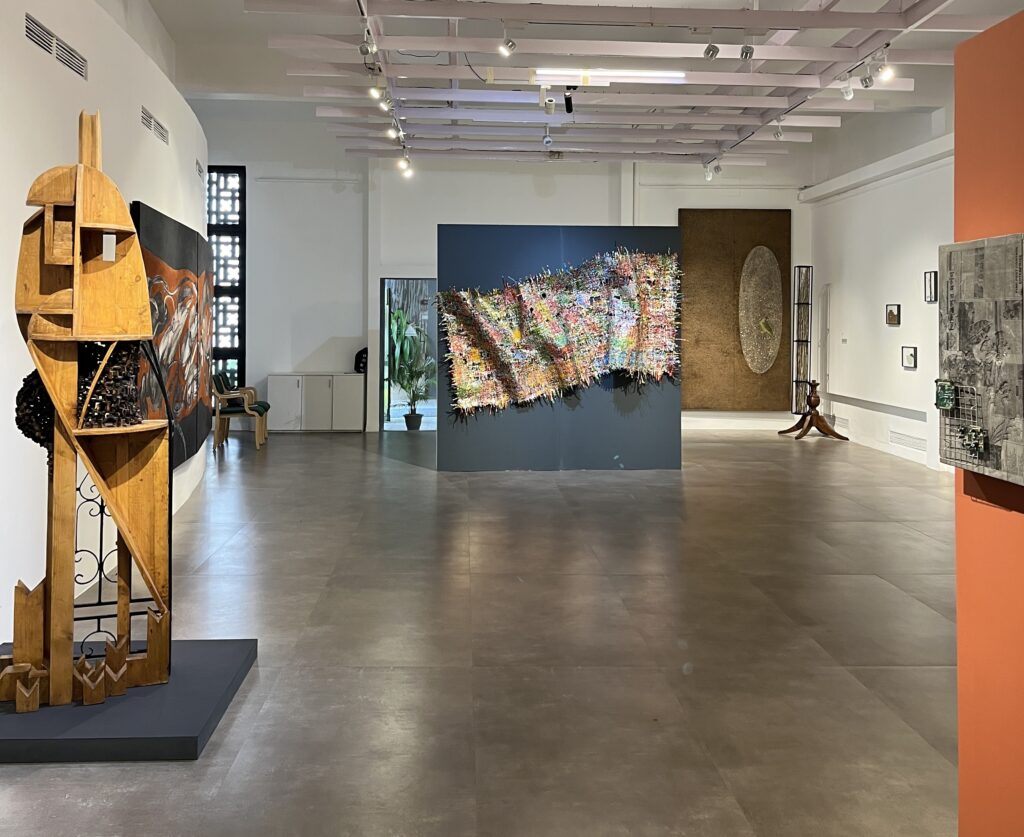Silent Spring, Solo Show by Santanu Dey
.
By Aditi Ghildiyal
The Silent Spring gushes across us, embodying traces of memory, residue and familial matters. It emerges as an archive and prophecy, both a lament and an invocation to the spectator. Vistas of layered landscapes open up, woven with disappearing or hidden stories as you walk from one work to another.
This exhibition brings together an artist’s practice that has been steeped in ecological concerns from the beginning. His works become a means of witnessing, remembering, and reclaiming what is being lost as well as what once was. It also echoes the gluttonous encroachment of humankind, veiled in the illusion we call progress. Silent Spring then becomes a pause that allows us to listen carefully to these evidences, scattered between shadow and light, and to the gilded survival within the ruins of modernity.
.

.
Santanu Dey’s methodology and practice make us look beyond his artistic sensibilities and dive into the archaeology of time and an impulse to chronicle. Found and reclaimed objects become fragments of evidence. He subverts the very identity of these materials, transfiguring them into totems of survival and fragility. His own history of migrations and struggles to find a foothold in the capital of the country lends an undertow of resilience and hope.
At the heart of his practice lies an act of reclamation. He gathers brick dust, raw fragments, industrial debris, discarded wood, nails, used lithography plates and other leftovers of a restless civilization. Each bears its own past. Reassembled and reimagined, they open into a testimony of ecological disbalance, where creation and destruction coalesce into each other.
Layering and balancing, both literal and metaphorical, becomes the process and the end result for the artist. In Yamuna, we are drawn into the river’s fiery depths. What first seems like waste and debris of a city turns out to be its mangled innards. Earth Goddess, a totemic sculpture, stands as a cubist fragmentation of a bird, its body carrying a charred pregnant belly of sorts. Other works take a jibe at our ambitious efforts to capture or replicate nature. A long tube with twigs encased in a frame becomes an entry point into a barren field with a falcon in a golden enclosure. The bird’s replication, drawn from a Mughal miniature, represents themes such as confinement, power, and the fleeting nature of life. Some works unfold like riddles, while others, like the huge thumbprint next to the cold and lifeless shrubbery, are stark, in-your-face metaphors the artist has experimented with.
.


.
Santanu’s practice has a tinge of dissent and resilience with a sprinkle of hope. He engages with the histories embedded in materials, as well as their hardness, by repurposing them into new forms, in a bid to offer new meanings. This practice transcends a linear narrative of urban expansion, instead foregrounding a cyclical understanding of survival, where decay and dissolution are acknowledged as integral rhythms within a larger, sustaining ecology.
